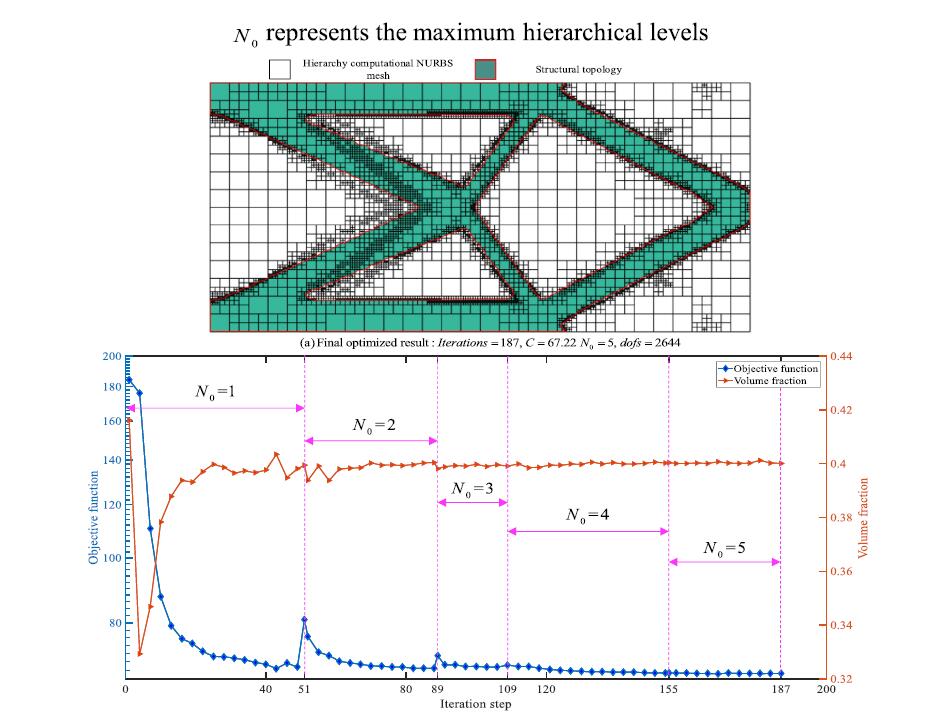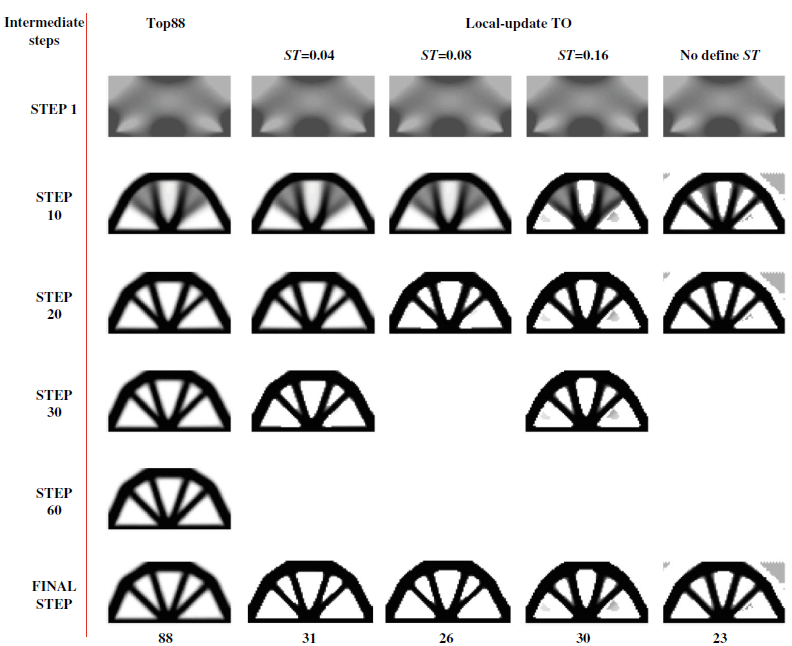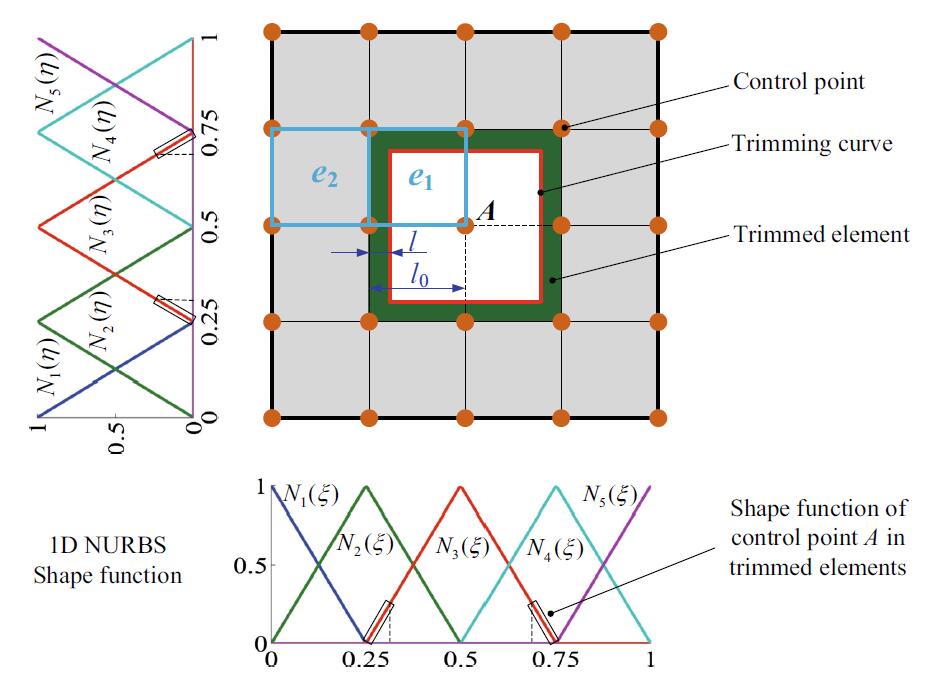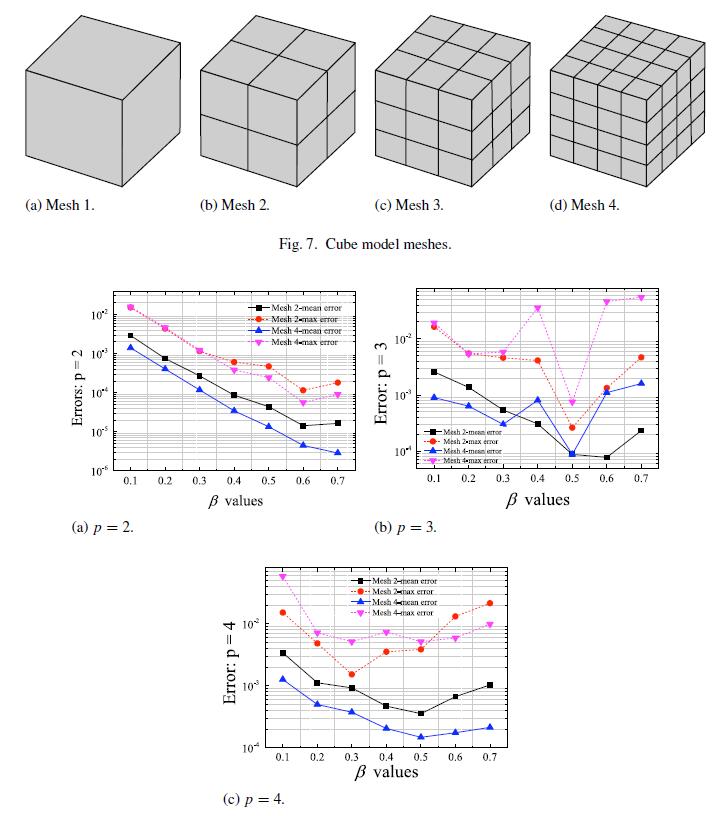An efficient isogeometric topology optimization using multilevel mesh, MGCG and local-update strategy
This paper proposes a new high-efficiency isogeometric topology optimization (HITO), including three part:
multilevel mesh, multigrid conjugate gradient method (MGCG) and local-update strategy, which improves the
efficiency in three aspects: mesh scale reduction, solving acceleration and design variables reduction. Four
benchmark examples are used to evaluate proposed method, and the results show that the proposed HITO
successfully reduces 37%–93% computational time compared to the conventional isogeometric topology optimization (CITO) and obtains consistent optimization results, which demonstrates the high-efficiency of
the HITO. Furthermore, the efficiency improvement of the HITO will be more significant for the large-scale
problems.





